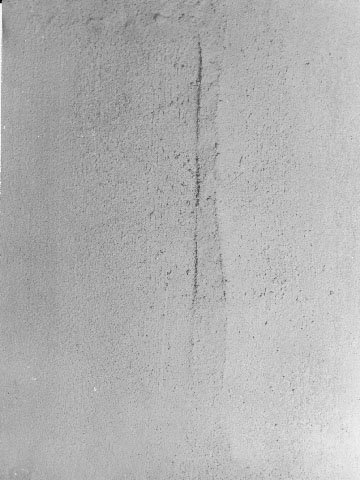white paintings
[25] In 1959 de vries made his first white painting. But as early as 1956 he had begun to make white-on-white paper collages, and [...] in 1960, in the manifesto publication of white is superabundance, by way of its antithetical relation to the discursive matter of the printed page, he had arrived at the definitive presentation of whiteness as a tabula rasa, an image of emptiness. For de vries the blankness of the white and monochrome paintings, however, is linked in particular to his growing interest at the time in the dialectics of Mahayana Buddhism. There he found the dynamic opposition of nirvana/samsara in which the emptiness, or the void, of liberation from 'the round of being', is set against the world of forms, of living and dying, and the one is discovered to comprehend the other: nirvana is samsara. This relates closely to the Mahayana formulation: 'Form is not different from emptiness; emptiness is not different from form. Form is precisely emptiness; emptiness is precisely form.'
[26] Looking at de vries's first monochrome paintings, which he had meant to signify nothing, to be devoid of intention and expression, and therefore of meaning, he realised they were not void, but objects in the world of forms, not empty but white, or grey or black. In those in which there was some agitation of surface, there were further complications, even the suggestions of the psychological aspects of making and authorship, from which he had tried to free himself as an artist. They enacted the Mahayana opposition in that they were, in the Upanishadic phrase, neti, neti: 'not this, not that'. They possessed the quality of tathata, which may be translated as 'suchness' or 'thusness', or, as de vries puts it, 'just this'.
This directness of visual apprehension, in which the act of indication replaces verbalisation, is, as Alan Watts describes it, '[of] the world just as it is, unscreened and undivided by the symbols and definitions of thought. It points to the concrete and actual as distinct from the abstract and conceptual.' Paintings of nothing, the monochromes were neither 'abstract' nor 'conceptual' art; they were things, concrete and actual.
The teachings of Zen, Vedanta and Mahayana - patterns of insights and actions that are neither intellectual nor intuitive, neither conceptual nor affective - went deep into the living practice of de vries, and shaped a central desideratum of his work: that art as such is neither here nor there, and is inseparable from life, being but an aspect (as science is another) of the means by which reality is revealed to the seeker. This in no way, he considered, invalidates the findings of artists, the best of whom are among the most assiduous researchers. In the years around the turn of the decade - 1960 - de vries reached a point of understanding that resulted from the making of the white and monochrome paintings: they had effectively set him free from common assumptions about the importance of the artist as the specially gifted, specially trained author of his works.
[source: Mel Gooding, herman de vries. chance and change (Thames and Hudson : London 2006) 25-26.

